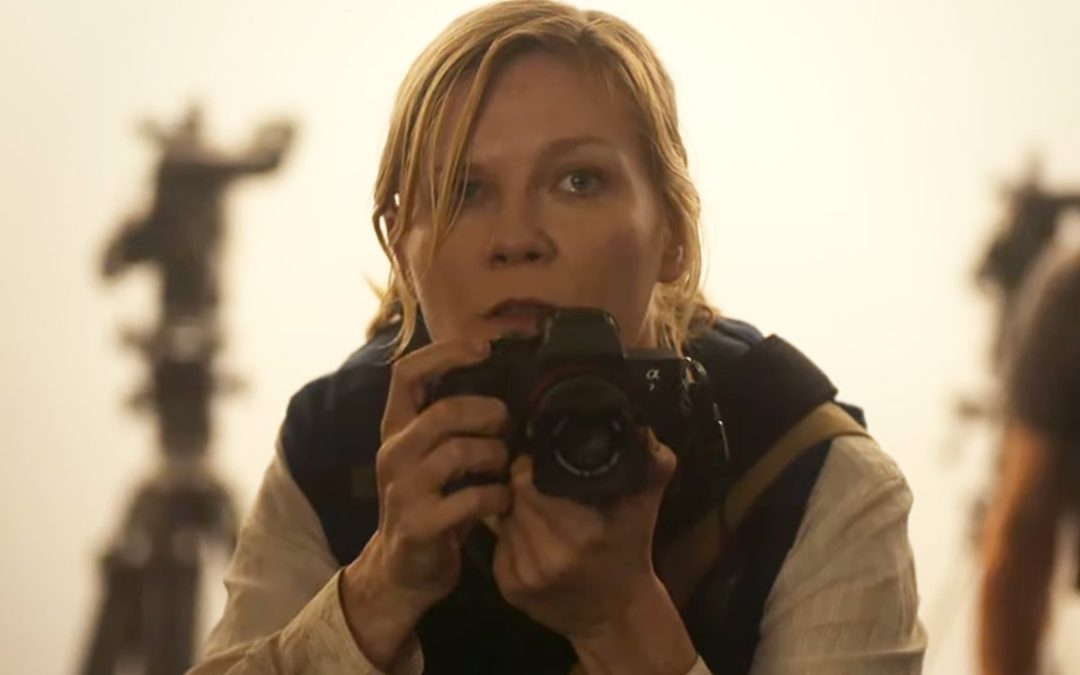Civil War (3 stars out of 4)
When I saw the trailer for “Civil War” earlier this year, I wondered if it might be one of the worst movies of 2024. With the presidential election coming up, our extremely divisive culture was already set to be even more divisive than usual, and though the premise of a modern cinematic civil war certainly felt relevant, I couldn’t imagine anyone doing it without caving in to enormous bias. Coming from Hollywood, I fully expected it to be an eye-rolling anti-Trump screed.
I guess going in with low expectations is just par for the course in 2024.
Well, after reluctantly watching the film at full-blown IMAX treatment in Jordan Commons, I can report that Alex Garland’s “Civil War” isn’t nearly as awful as I expected it to be. In fact, I enjoyed elements of the film very much. It still shows its biases, though you can tell the filmmakers were trying to keep things ambiguous. I wouldn’t go so far as to say I was proven wrong, but I wouldn’t call “Civil War” a bad movie, either.
The premise is simple, mostly because we’re intentionally not given much to work with. At some point in the undetermined future, the United States of America is at war with a movement of secessionists led by the “Western Forces” of Texas and California. We have no information about what brought these two ideologically polar states together, or what finally triggered our nation’s second civil conflict.
Though the conflict is widespread, “Civil War” focuses on a group of journalists traveling from New York City to Washington DC, in the hopes of interviewing the embattled US President (played in fleeting clips by Nick Offerman). The group is led by a veteran war photographer named Lee (Kirsten Dunst), who is deflated to see that her attempts to portray the horrors of war in widespread countries has failed to keep it from coming home with her. She is joined by Joel (Wagner Moura), a colleague named Sammy (Stephen McKinley Henderson), and a young upstart photojournalist named Jessie (Cailee Spaeny), who idolizes Lee and schemes her way into the expedition.
The tension between Lee and Jessie guides much of the narrative as the group makes its way on a roundabout journey to the capital, encountering the aftermath of what must have been a few months of fighting. We see lots of wrecked cars and bodies that haven’t quite decomposed yet, and encounter tense standoffs with armed combatants who never quite reveal their loyalties.
What surprised me most about the film was its exploration of war photography, and the question of how a photojournalist maintains his or her humanity when photographing people enduring pain and suffering. Early in the journey, Jessie encounters a barn where two men have been strung up as prisoners, and though she fully intended to “get the shot,” she finds the experience too disturbing to remember to use the camera.
Scenes like that are one of “Civil War’s” better elements, adding real tension while portraying the disturbing sight of Americans torturing fellow Americans. “Civil War” also succeeds in the way the film both visualizes this disturbing world, and even injects occasional still frames of what the characters are photographing. One late scene sees the travelers pass through a forest fire in slow motion, offering a perfect blend of beautiful cinematography and haunting tone. It’s the element of “Civil War” I’ll remember best, though I don’t imagine that was Garland’s intent.
While the intended ambiguity is largely successful, and light years ahead of some recent ham-fisted attempts to address social issues, “Civil War” still offers clues to its political sympathies; for example, the primary danger in interviewing the president is that journalists are being shot on sight in the capitol, having been declared enemies of the state. Again, it isn’t near as transparent as one might expect, but a little more shuffling of the deck at the scripting stage might have helped.
In the end, “Civil War” deserves credit for its aspirations, and even more credit for the quality of what it gets on screen. People will likely come away from it with what they had going in, but it’s hard to think that wasn’t going to happen anyway.
“Civil War” is rated R for scattered profanity, violent images, and sequences of brutal war violence.

